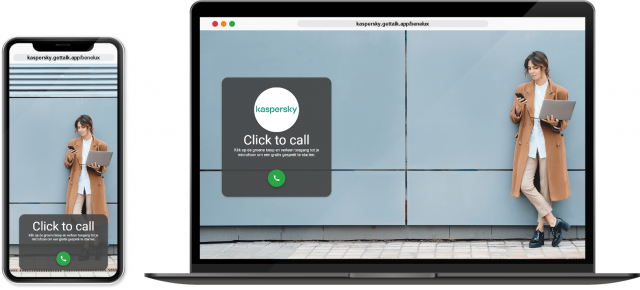The danger of increased digitizing is that the human component like tone of voice, empathy and engagement are pushed aside. Customers want support, preferably 24×7. Quickly and easily with for example, self-service, (chat)bots, etc. If these options are not available or not easily accessible, personal voice contact is indispensable. Many products and services are becoming more and more complex and so are customer questions. And this calls for more human interaction.
The world is digitizing, and so is customer service. Channels like email, social, chat and bots all happen online. Easy and fast when it comes to simple and non-urgent questions, but when things become complicated or urgent, 34% of consumers* still reach for the telephone. Because of speed and the indispensable human touch. What does the future of customer service telephony look like in this digitizing world?
Products and services are becoming more complex

Important for customer service satisfaction
This is also reflected in CGS’s Customer Service Crisis Survey (October 2020). Nearly 40 percent of UK and US respondents would rank the “opportunity to speak with a human agent” as a top-three requirement for ensuring customer service satisfaction. And about 44 percent said they wish brands would be more transparent about ‘how to get help from a human’. What you often see is that digital channels are pushed forward on website and you need to look hard for that telephone number.
Telephony is on an island
Many brands prefer to promote digital channels where agents can multitask and handle more interactions at a time. And where everything that’s done and said is (often) automatically logged in the CRM or ticketing software. Telephony is a single tasking activity which is why it’s often considered to be more expensive. It’s also a channel that isn’t as easy to measure and analyze as other digital (online) channels. Telephony isn’t integrated into the front- and backend and often operates on an island separate from the other channels.
Outside the online journey
Up until now, telephony has been an offline channel which isn’t part of the online journey. When website visitors reach for the telephone, they are out of sight and can’t be tracked. This makes things like customer satisfaction and return on investment harder to measure because surveys are sent through different channels (with low attention value as a result) and you can’t always link a conversation directly to a sale.
Mix telephony with digital channels
There must be another way, we felt at Sound of Data. What if you could turn telephony into an online channel, take it off its island and make it part of the online journey? With that in mind, we developed Talk. This is a click-to-call solution that makes it possible to directly call customer service with the click of a button on a brand or organization’s website, app, or newsletter. The visitor doesn’t have to look for a telephone number and can call directly from the browser. Without using a phone number or telephone network. On any device with a microphone that’s connected to the internet.
Embed telephony in the online journey
Talk embeds the conversation in the online journey. This is especially interesting for E-commerce because it allows marketeers to follow the visitor and increase engagement and conversion. For example, you can show a visitor a special offer while in the queue. Or you can send them to a specific landing page or show a short survey when the call ends. This is not possible with a regular telephone call. Talk is based on WebRTC. It is a VoIP call and forwarded to the call center via our voice platform in the same way as regular calls. Contact center agents won’t know the difference.
Maximize your conversion rate
Kaspersky is one of the companies that is actively using Talk on their website. Tim de Groot was immediately interested when he heard about it through his colleague at Customer Service. As Head of E-Commerce Benelux & Nordics, Tim wants to keep customers in the online customer journey as long as possible and maximize the conversion rate. “In the E-Commerce department we also look at customer service from a commercial point of view. Customer satisfaction is super important. If our customers feel protected by our products, they remain customers and don’t quickly switch to competitors.”

Telephony remains a popular channel
Kaspersky is one of the fastest growing companies in cyber security and active in 200 countries. Given the nature of the business and the large number of customers, customer contact plays a major role in the organization. Tim: “Consumers and companies can come to us for technical advice as well as questions about orders, installation and support. Together with a few external call centers, we serve the various target groups. Technical topics are more difficult to explain in text than in speech. We also notice that especially the older generation wants to call, they are used to that. The younger generation is different. But even then, when something gets complicated, they too eventually pick up the phone. It simply solves their issue faster.”
Easy to implement
The implementation of Talk is simple because it’s basically just adding a button to the website. From that button, the visitor is directed to a page that fully meets a brand’s look-and-feel. That’s where the real conversation starts. Tim was happy with the implementation: “For Sound of Data it was less work than for us. This was mainly due to our internal process of getting approval to implement Talk on the website. After all, we are active in cyber security so everything we do needs to comply with our own security requirements. Talk fully complied so approval was granted.”
Customer service from money taker to money maker
The first results show that users return to the website after a conversation and continue their online journey. A special offer on the landing page leads to more filled shopping baskets. The ultimate goal, of course, is more online conversion and turnover. Tim explains: “After a successful call, customers end up on a landing page with a special offer. That’s not possible with a regular phone call and that’s why this tool is so interesting for us. Customer service is often seen as a money taker. The costs are very easy to measure but measuring the value is more difficult. I am convinced that we can turn customer service into a money maker by using a tool like Talk because we can measure how telephony contributes to online conversion. I can’t think of a nicer mix of customer contact, sales and marketing.”
The future is online
At Sound of Data, we want to give brands a voice and customers a listening ear. Telephony is one of the few channels that enable personal human interactions. Innovations like Talk and video-integrations, keep this old communication channel relevant and valuable to sustain a loyal customer base. They turn the voice channel into an online channel, so it’s no longer on a separate island but becomes a real part of the omnichannel mix. The future is online, are you?
This article was first published in Cross Border Magazine; edition 18, June 2021. Read the magazine here.
* Research Microsoft 2019